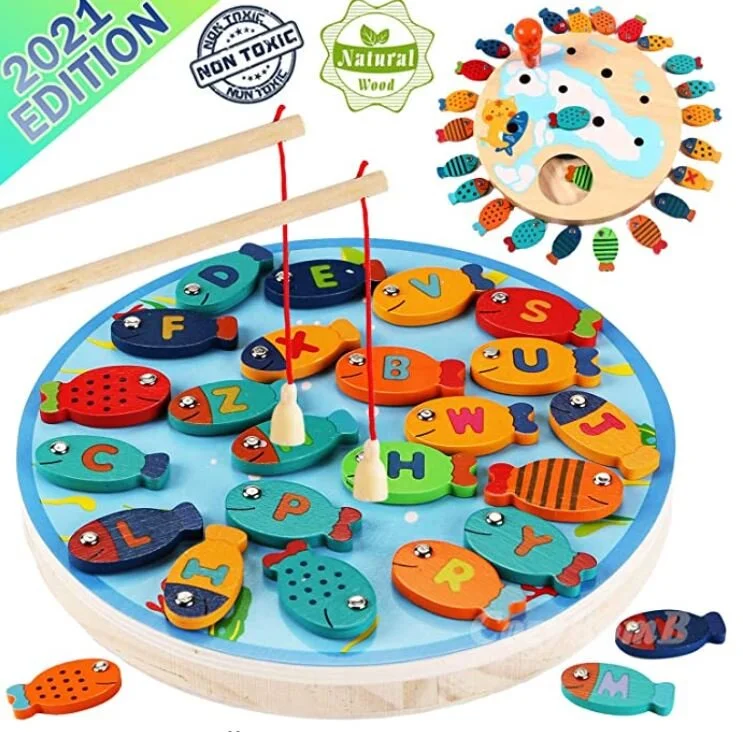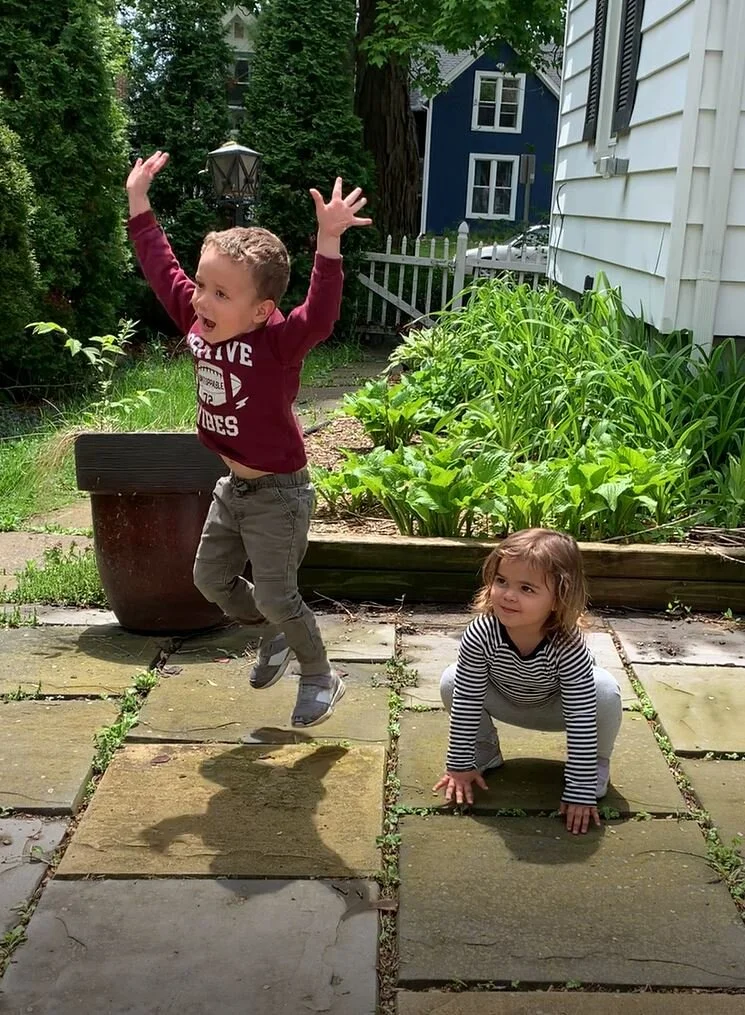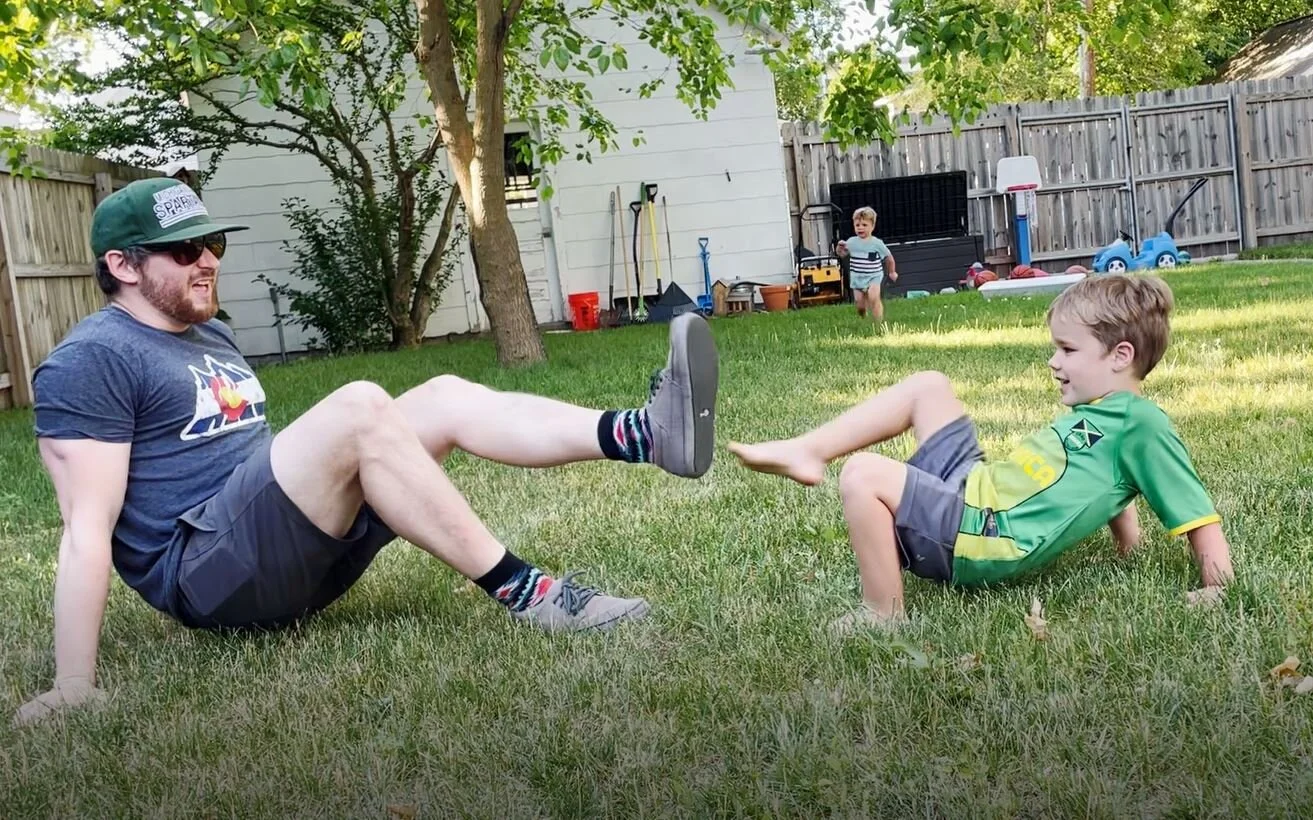Toddler Games for Balance and Core Strength
Balance and core strength are key to strong physical development, but toddlers aren’t going to follow an exercise routine to make that happen. Luckily, they don’t need to! These strengthening activities are part of all the fun things they do each day, but if you feel like your toddlers need a more consistent push to work on these muscle groups, you can use these games to increase their time improving their balance and core.
The Pick-Up Game
Squats, squats, squats, squats, squats, squats, EVERYBODY!
A toddler should have a great squat position. They should be able to get praise for their perfect form from any weightlifting coach. Perfect form means their feet are a good comfortable distance apart, their heels stay on the ground, they bend down far enough that their butt drops below their hips, and their trunk and chest stay upright and aligned. It is the perfect squat form that us adults envy.
Want to get your kids to practice these squats and get a little help at home? We’ve got your plan:
Step One: Ask your toddler to pick up their toys.
Step Two: Realize they won’t.
Step Three: Invent a game where they have to repeatedly pick things up off the floor.
Step Four: Get a cleaner living room and a toddler with a strong core and good flexibility.
The beauty of this game is that you can do it anywhere with nearly anything. You can pick up a basketball and throw it into the hoop. You can squat down to roll a large exercise ball to one another. You can bend down to refill your bubble wand and get up to blow the bubbles. The goal is to integrate these movements into all kinds of activities throughout the day.
Toe-Walking Adaptation to Squatting
If your little one tends to prefer to toe-walk, their heels may be placed on the ground and they may want their feet wider apart than you would prefer. Continuing to play games that encourage squatting will help to slowly lower their feet to the ground. Practice some counting and see how long they can hold the position! If this is still too challenging, try the old-fashioned gym class wall squat. Place your back against a wall and slide down until your hips and knees are bent to 90 degrees — then hold that position as long as you can!
Circle Pulls
Place FatBrain Squigz suction toys (linked at the bottom of the article) in a circle around where you’re standing, squat down to pull each one up off the floor. If this is easy, repeat while standing on an uneven surface, like a couch cushion, a pillow, a foam pad, a BOSU half-ball, or a Balance Stone.
Go Fishing
This wooden magnetic fishing game (linked at the bottom of the article) can be used in so many ways. Standing on an uneven surface and squatting to reach the fish will help to improve core and leg strength. Lying down with their chest over a small ball or pillow, in an assisted plank position, will work on postural, spinal, and shoulder muscles while they catch those fish!
Animal Moves
Linking movements to an animal and playing pretend is a great way to engage little ones in moving their bodies in different ways. Here are some examples:
Frog Jumps: Jump leaving the ground with two feet and landing on two feet in a good squat position. You may want to try and link two or three jumps together. It could also be fun to place painter’s tape on the floor or use sidewalk chalk outside as goal lines.
Bunny Hop: Hop on your toes with your feet close together.
Penguin Walking: Walk on your heels. Spice it up with a little hand flapping.
Snake Slither: Army crawl on your belly across the floor, trying to stay as low to the ground as possible.
Bear Crawl: Crawl on your hands and feet with your belly and knees off the ground.
Dinosaur Stomp: Bring your knees high knees and back down again, alternating legs.
Inchworm: Start standing, bend over to place your hands on the floor, walk your hands forward to a plank position, then walk your feet in to meet your hands, stand up, and do it again!
Crab Walk: Sit on your bottom with your knees bent and feet on the floor, place your hands on the floor beside your bottom and lift your bottom up. Try to move forward, backward, and side-to-side. You can also try to give each other foot-high-fives!
Balloon Tapping
Solo or with a partner, tap the balloon into the air, keeping it afloat. Try it in a half-kneeling position (the “proposal-kneel”), while on both knees, or while standing on one foot. Be sure to always supervise children with balloons, since they have the potential to be an unsafe toy.
Bird-Dogs
Start on your hands and knees on the floor and kick your right leg straight back. Try not to twist your body! Pick your left hand up and reach your arm forward. Hold for as many seconds as you can and repeat with your left leg and right arm.
Hop Scotch
Channel your elementary school self with this one! Alternate between a two-foot jump and a one-foot hop! 2-feet → 1 foot (left) → 2-feet → 1 foot (right)!
Balance Beam
Get your gymnastics on with this one. You can practice your balance beam skills in all kinds of ways. Here are some options:
Pretend to walk on a tightrope with one foot in front of the other.
Create a design with painter’s tape or chalk and attempt to walk along with the design.
Some playgrounds and gardens have wooden beams that go along the perimeter. Walk along the edge, on top of those beams.
Balance Toys
Though you don’t need to buy something to work on these skills, there are toys and tools that can help — and add to the fun! Here are some we suggest:














